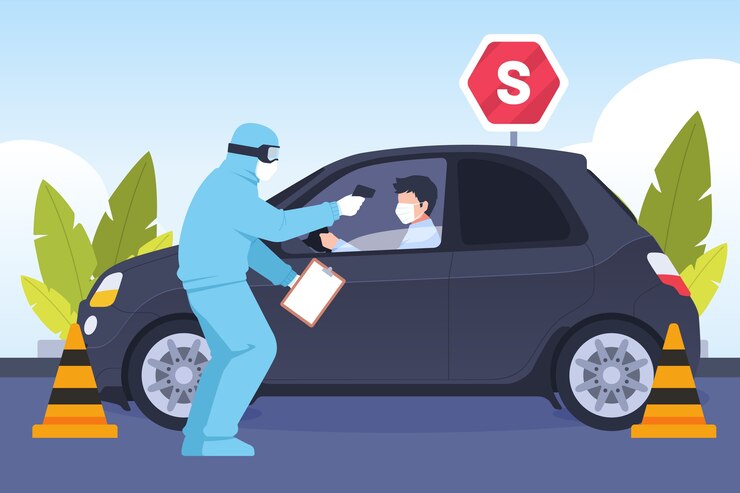Fortifying Your Home: Strategies to Prevent Vehicle Intrusions
In today’s world, the prevalence of road accidents has become a pressing concern, particularly those involving impaired drivers. These incidents are not just limited to the roads but can extend to the very doorsteps of our homes. The thought of a vehicle, out of control, encroaching into personal spaces is a real and frightening possibility. This risk is significantly heightened with drunk drivers, who, due to their impaired state, may lose control of their vehicles, veer off the road, and cause catastrophic damages. Such scenarios pose not only a threat to the physical integrity of homes but also endanger the lives of inhabitants, leading to serious injuries and, in some cases, fatal outcomes.
Acknowledging this danger, homeowners are looking for ways to fortify their homes against such unforeseen vehicular intrusions. The situation calls for proactive measures, moving beyond traditional home safety practices to incorporate specific strategies aimed at preventing head on accidents from breaching home boundaries. This need has given rise to various innovative and practical solutions that homeowners can adopt. From structural reinforcements to strategic landscaping, there are several effective methods to enhance home safety. These measures are not just about physical barriers; they also involve community awareness and legal advocacy to address the root cause – impaired driving. By combining these strategies, homeowners can create a safer living environment, significantly reducing the risk of auto accidents and ensuring peace of mind in the face of potential dangers.
Install Bollards or Safety Barriers

One of the most effective ways to protect your home is by installing bollards or safety barriers. These sturdy structures, commonly seen in commercial environments, can be aesthetically integrated into residential landscapes. Bollards can be made from various materials like steel, concrete, or reinforced plastic and are designed to withstand the impact of a vehicle. By placing them strategically around the perimeter of your property, particularly near roadsides or potential impact zones, you can create a physical barrier that prevents cars from encroaching on your home.
Reinforce Exterior Walls
Enhancing the strength of your home’s exterior walls is another crucial step. This can be achieved by using impact-resistant materials in the construction or renovation of exterior walls facing the road. Materials such as reinforced concrete, steel, or specially designed impact-resistant drywall can absorb and disperse the force of a collision, reducing the likelihood of a vehicle breaching the home. Additionally, consider installing impact-resistant windows and doors, which not only offer protection against vehicular intrusions but also improve security and energy efficiency.
Create a Defensive Landscape

Landscaping can play a surprisingly effective role in safeguarding your home. Planting trees and dense shrubbery in the front yard, especially along the roadside, can act as a natural barrier. Not only do they enhance the aesthetic appeal of your property, but they can also slow down or stop a vehicle that veers off the road. However, it’s essential to choose the right type of plants and position them strategically to ensure they serve their protective purpose without obstructing visibility or access.
Elevate the House Foundation
If you are constructing a new home or considering major renovations, elevating the house foundation can be a preventive measure. A raised foundation creates a physical and psychological barrier, making it more difficult for a vehicle to accidentally drive into your home. Elevated homes also offer additional benefits such as improved drainage and reduced flood risk, but this option requires significant investment and planning.
Install an Early Warning System
Technology can play a pivotal role in enhancing home safety. Installing motion sensors and surveillance cameras around the perimeter of your property can provide an early warning in case of an approaching vehicle. These systems can be connected to alarms that alert homeowners of potential dangers, allowing them to take necessary precautions. Moreover, having surveillance footage can be invaluable in the event of an accident for insurance and legal purposes.
Addressing the Threat of Impaired Drivers
While structural and technological enhancements can significantly reduce the risk of a car crashing into your home, the threat posed by drunk drivers requires broader measures. Community awareness and advocacy for stricter enforcement of DUI laws are critical. Homeowners can engage with local authorities and neighborhood associations to address concerns about road safety, particularly in areas prone to accidents.
Additionally, awareness campaigns focusing on the dangers of drunk driving can be instrumental in preventing such incidents. Homeowners can collaborate with local schools, community centers, and law enforcement agencies to promote responsible driving behaviors and the use of alternative transportation options for those who have been drinking.
The safety of our homes extends beyond just the locks on our doors or the strength of our walls. In a world where the unpredictability of road accidents looms, taking proactive measures to safeguard our homes becomes imperative. By combining physical barriers, strategic landscaping, technological innovations, and community engagement, homeowners can significantly mitigate the risk of vehicular intrusions. While no measure can guarantee absolute safety, these strategies collectively contribute to creating a more secure and resilient living environment, offering peace of mind in the face of potential dangers posed by vehicles, especially those driven by impaired drivers.


















